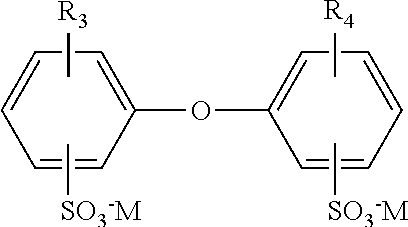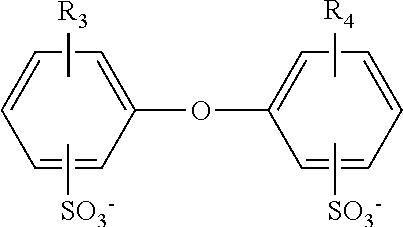Filtration and reuse of surfactant-containing produced water for oil recovery
a technology of surfactant-containing produced water and oil recovery, which is applied in the direction of membrane technology, chemistry apparatus and processes, and wellbore/well accessories, etc., can solve the problems of increasing the cost and complexity of the process, and reducing the efficiency of the oil recovery process
- Summary
- Abstract
- Description
- Claims
- Application Information
AI Technical Summary
Benefits of technology
Problems solved by technology
Method used
Image
Examples
Embodiment Construction
[0005]The membranes used in the present invention may be characterized as ultrafiltration membranes due to their preferred average pore size of from 0.01 to 0.1 μm. While the membranes may be fabricated into a variety of configurations, (e.g. flat sheet, hollow fiber, tubular, etc.), a hollow fiber configuration is preferred. The hollow fiber membranes are preferably assembled within a filter module including a tubular-shaped housing extended along an axis between an opposing first and second end with an inner chamber. The housing may be constructed from a wide variety of materials, e.g. plastics, ceramics, metals, etc., however, in one set of preferred embodiments the housing is made from an injection moldable plastic such as polyvinyl chloride (PVC) or acrylonitrile butadiene styrene (ABS). The module includes a plurality (e.g. hundreds) of semi-permeable hollow fiber membranes (“fibers”) located within the inner chamber. The fibers include a semi-permeable wall surrounding a lume...
PUM
| Property | Measurement | Unit |
|---|---|---|
| Mw | aaaaa | aaaaa |
| pore size | aaaaa | aaaaa |
| cloud point | aaaaa | aaaaa |
Abstract
Description
Claims
Application Information
 Login to View More
Login to View More - R&D
- Intellectual Property
- Life Sciences
- Materials
- Tech Scout
- Unparalleled Data Quality
- Higher Quality Content
- 60% Fewer Hallucinations
Browse by: Latest US Patents, China's latest patents, Technical Efficacy Thesaurus, Application Domain, Technology Topic, Popular Technical Reports.
© 2025 PatSnap. All rights reserved.Legal|Privacy policy|Modern Slavery Act Transparency Statement|Sitemap|About US| Contact US: help@patsnap.com


